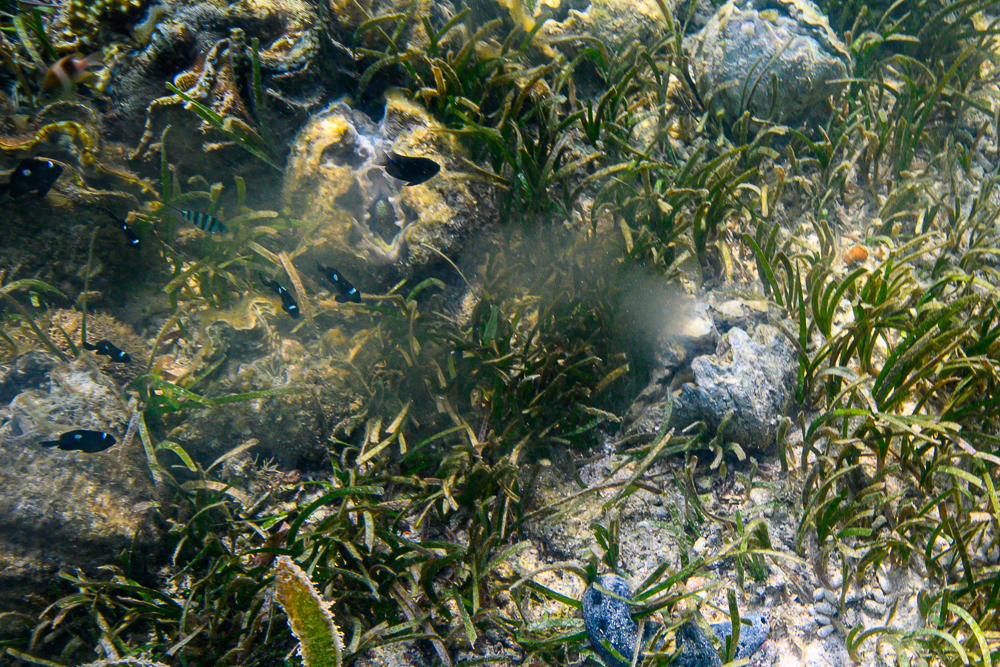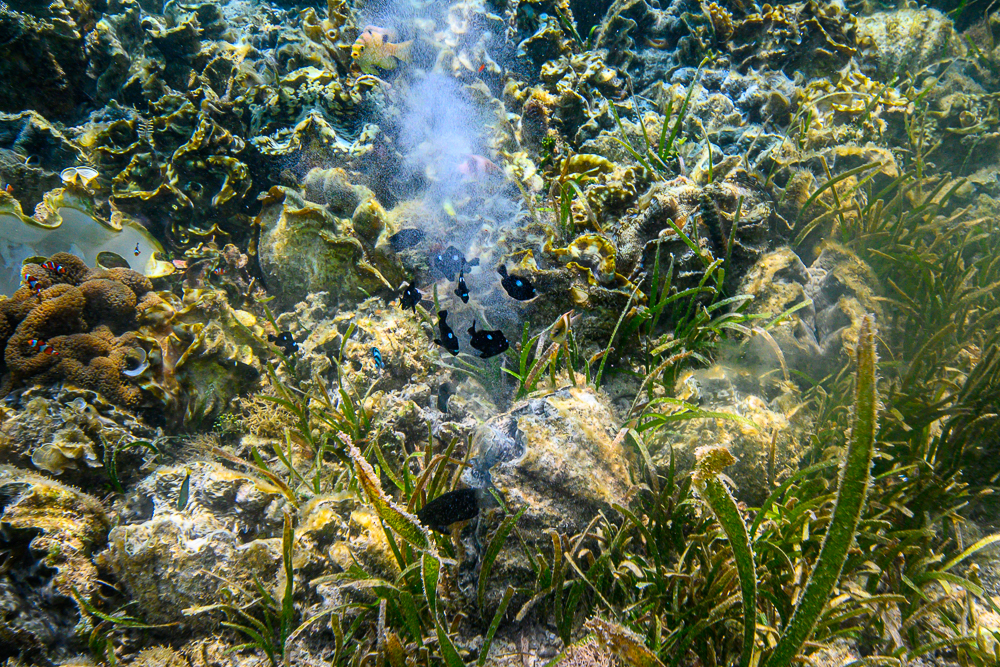Often when I’m asked, “What’s the difference between Indonesian Reefs and Australian Reefs?” I usually answer: The lack of Giant Clams together with the lack of fish and their smaller size. While these bivalves have been properly protected in Australia, all such efforts have failed miserably in Indonesia. And up until a few weeks ago, I could still remember the only ever Derasa clam, I’ve ever seen in Indonesian water, in Komodo National Park, or I could count on my hands the number of Tridacna Giant Clams I encountered in at least half a dozen thousand dives.
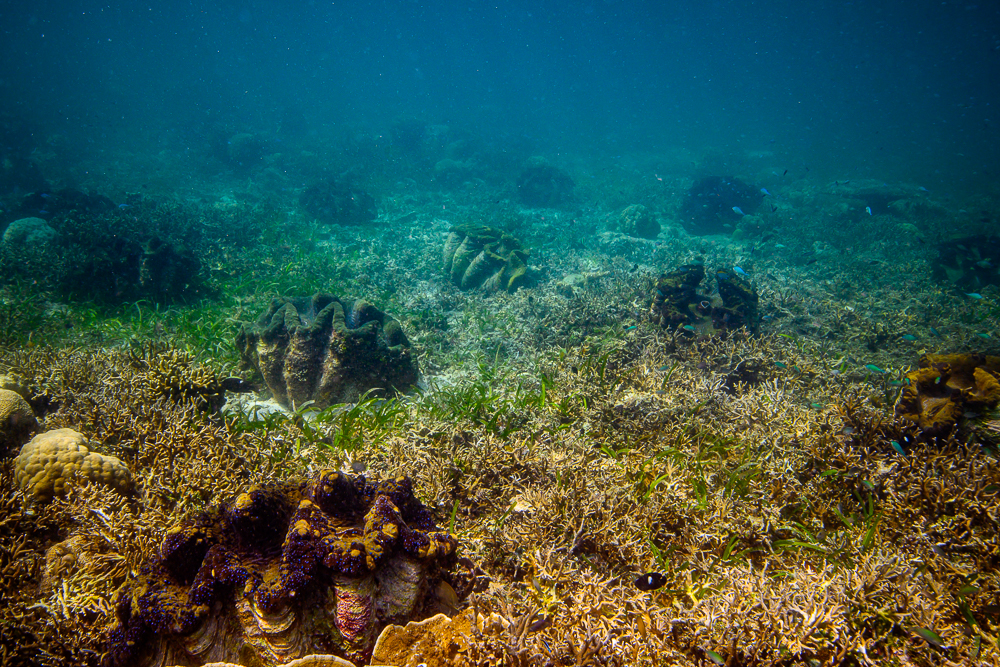
Recently, on Banggai Island, where the famous cardinalfish comes from, I hit the sweet spot. A small village on the southern Banggai Island has been declared a Giant Clam Sanctuary, and a group of villagers is their caretakers, to make sure they’re healthy and not poached. (Clam meat is prized in Asian markets.)
A new approach to protection:
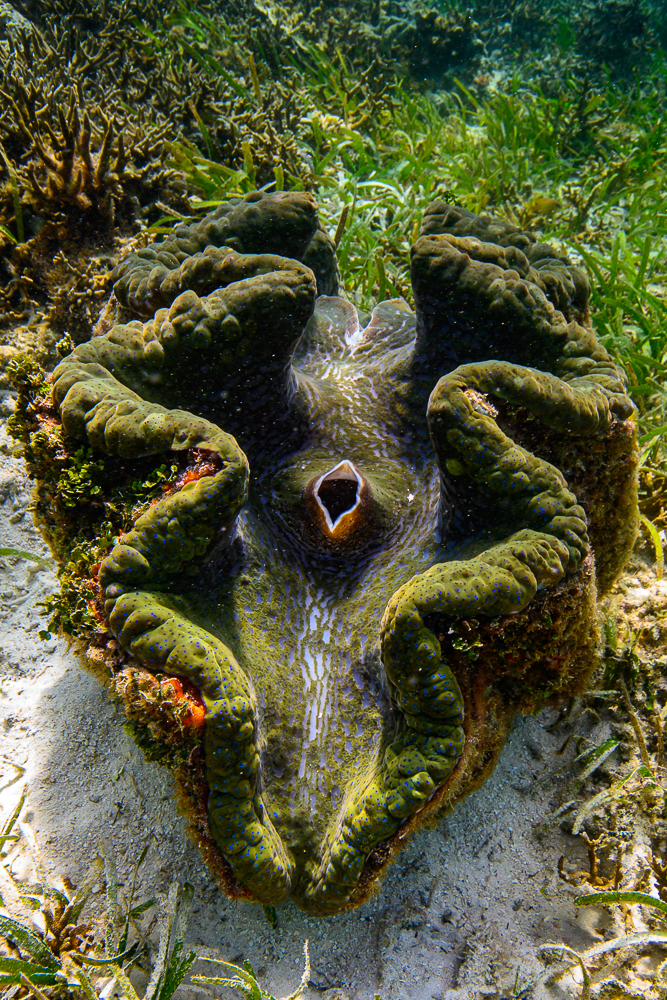
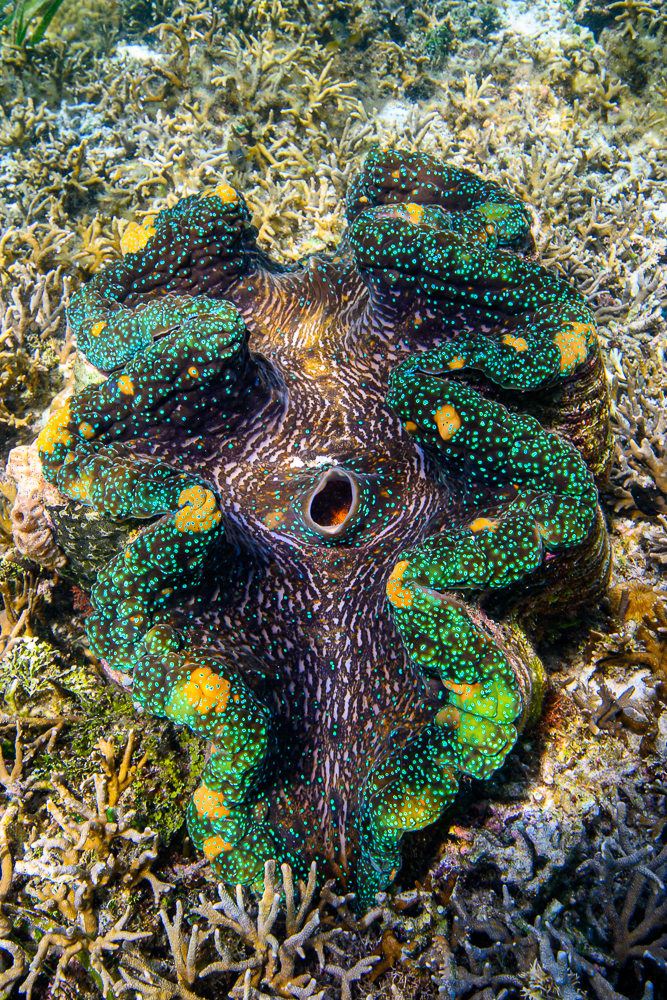
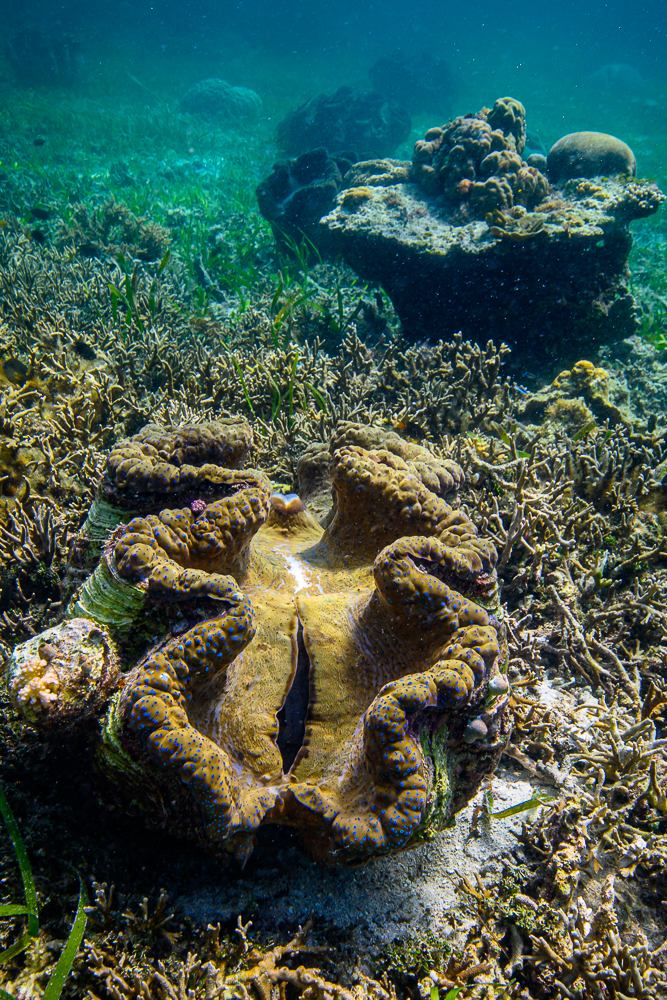
A few yards away from the village pier, at the limit where the eelgrass stops and the corals start, lay more than 50 Tridacna gigas (Giant Clams), and others: Tridacna derasa (Smooth Giant Clam), Tridacna squamosa (Scaled Giant Clam), and Hippopus hippopus (Horseshoe Clam). Never had I imagined encountering such a delightful sight.
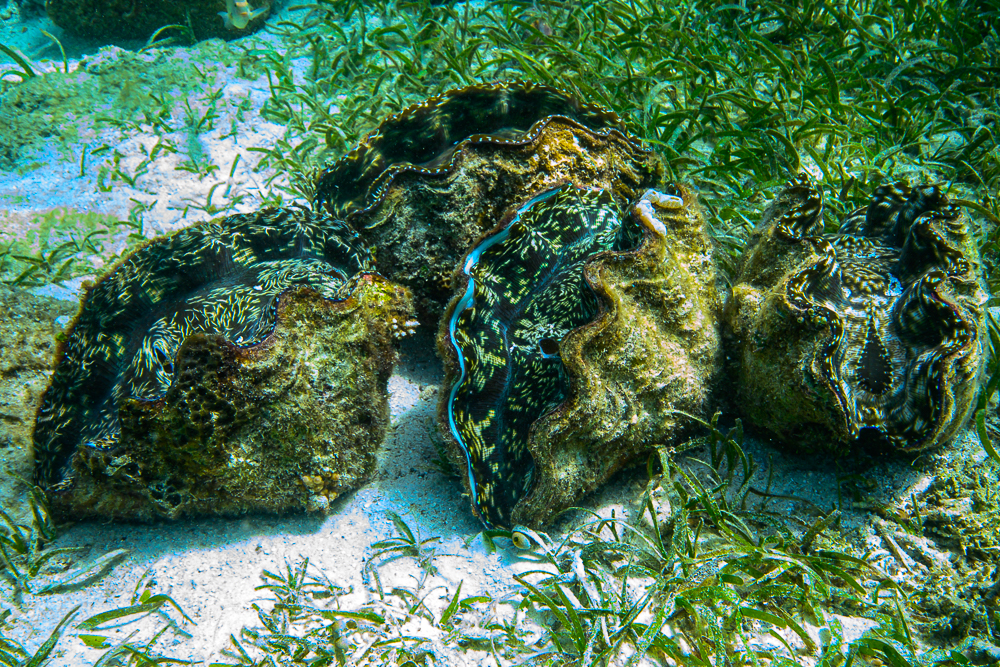
Over a decade ago, the Indonesian fisheries department understood it couldn’t protect them. So they decided to buy them alive, from fishermen. At the same time, they have looked for a village with a community ready to guard them. In this case, it was a small village in the south of the Banggai Islands, in Central Indonesia.
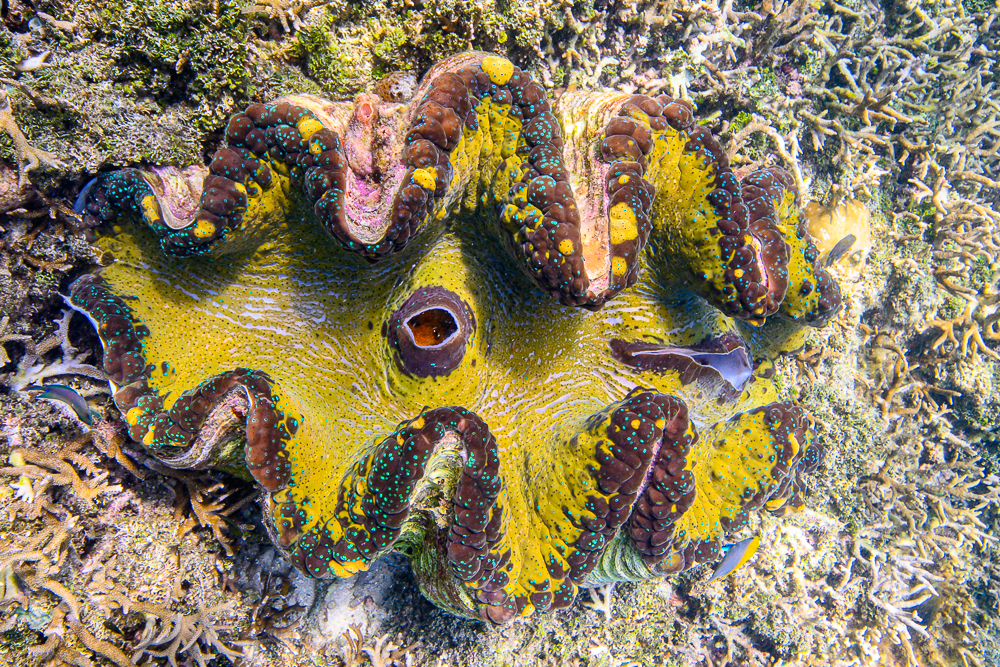
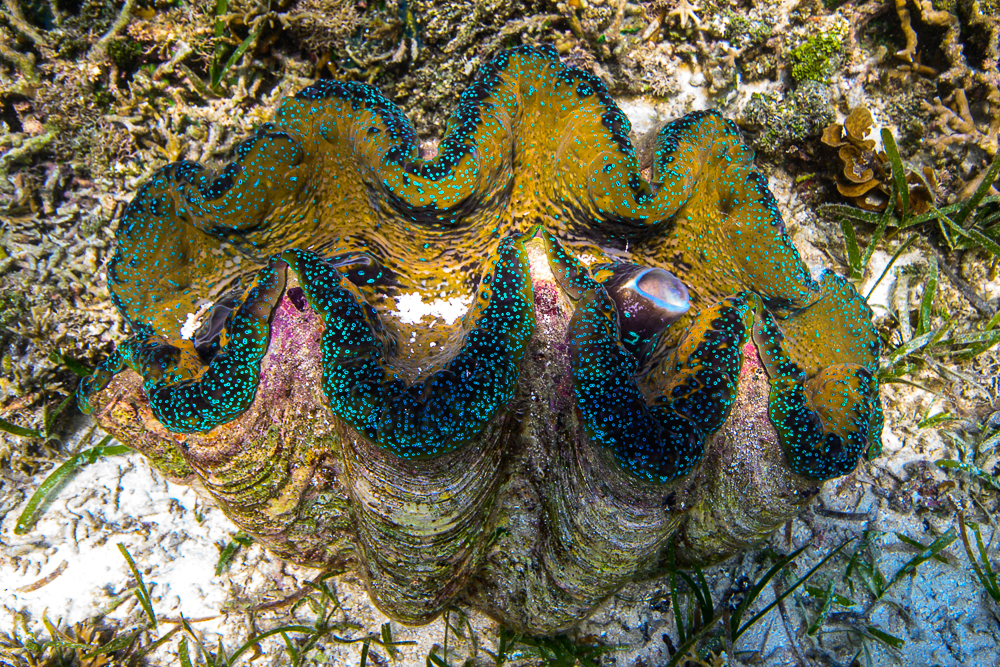
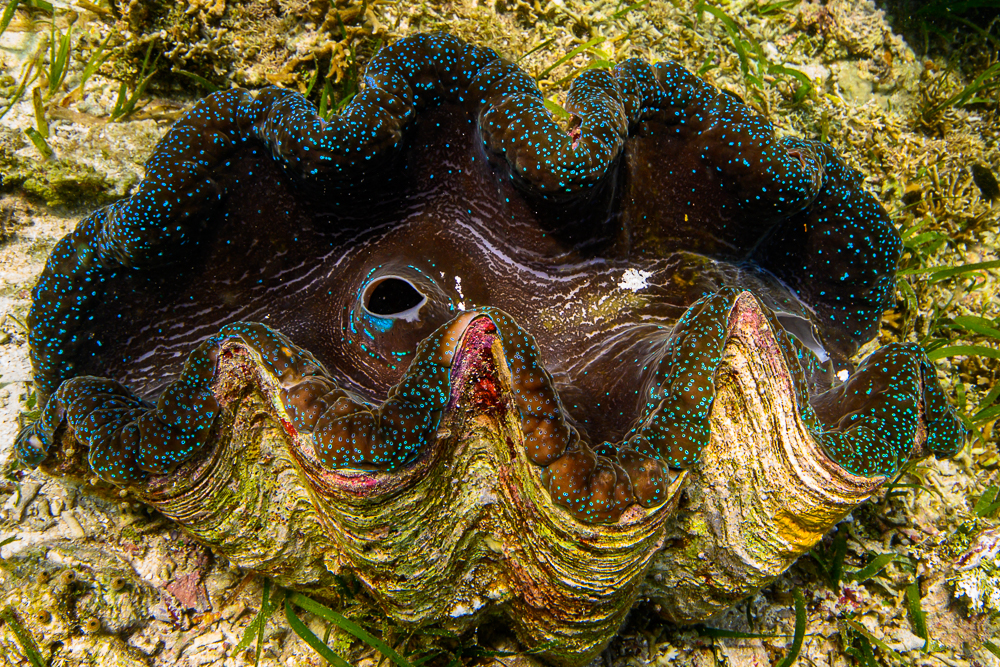
There, just beside the village pier, in 12 ft of water (4m) lay more than 50 Tridacna gigas (Giant Clams), 25 Smooth Giant Clams, and dozens of Scaled and Horseshoe clams. For the clam passionate like me, it’s paradise. We can see and photograph all the different color morphs of these clams—something impossible in any other place. We even got lucky and were able to witness Hippopus hippopus (Horseshoe Clam) spawning.
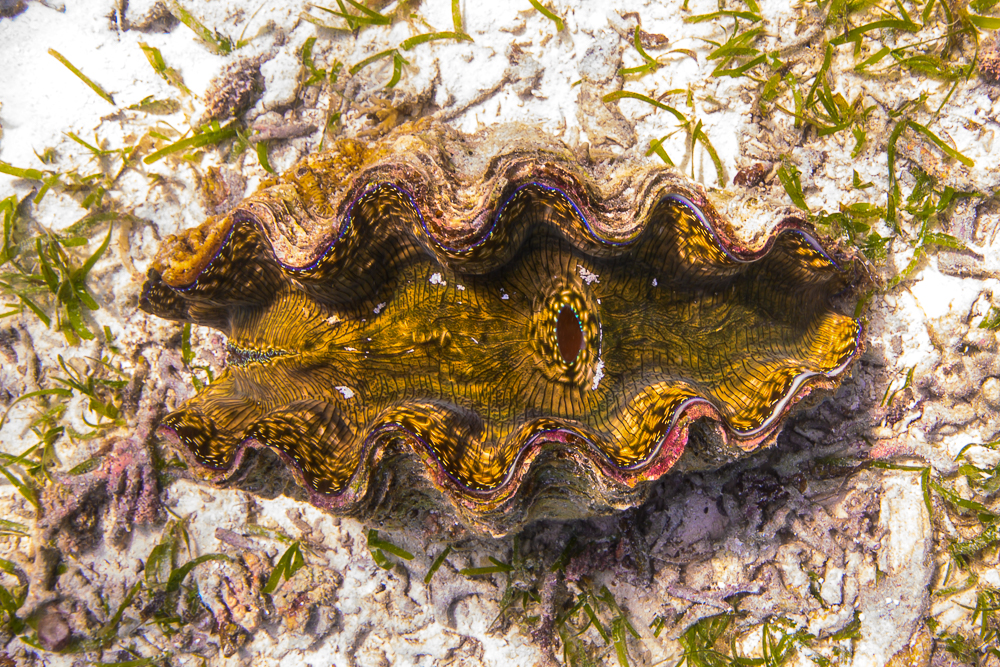
Having the whole island population of clams concentrated in one location is probably good for offspring and re-population, but it’s also a risky strategy.
A high-risk strategy:
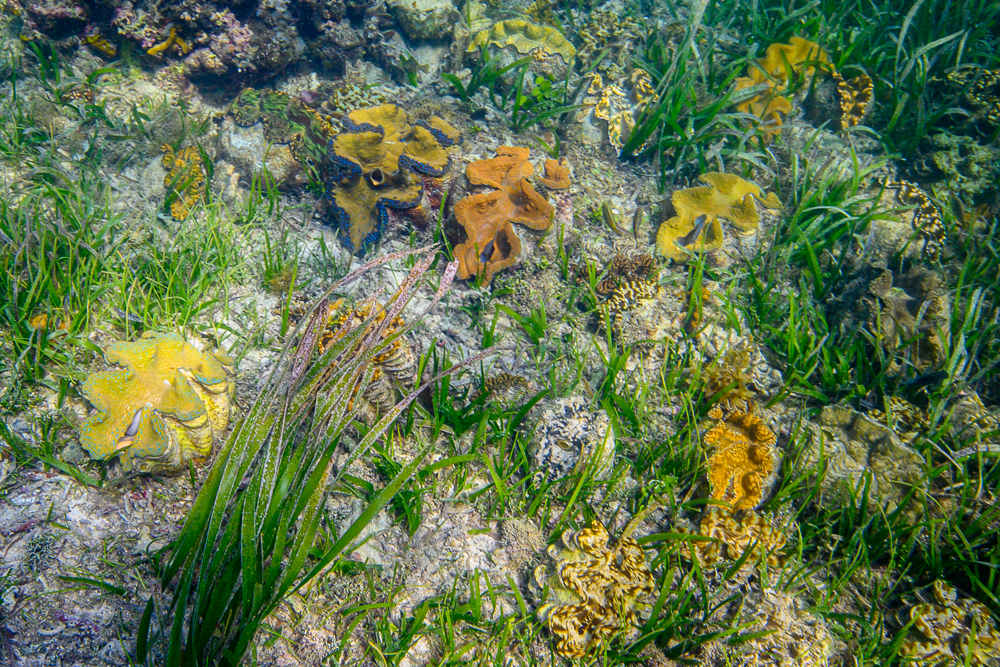
It’s quite unfortunate that we have to reach this kind of measure to protect them from poaching and traffic. During the time, we spent there, we had a long conversation with the ranger/caretaker of these clams. Notably, we discussed the disease and parasite risks, having this large, vulnerable clam population concentrated in such a small spot. We educated them on different parasites and clam disease so they could monitor and respond in case of outbreak, and hopefully save these amazing creatures.
